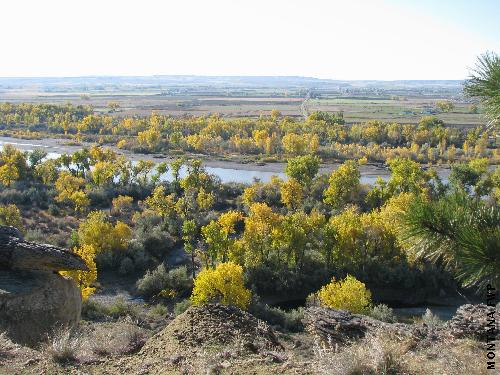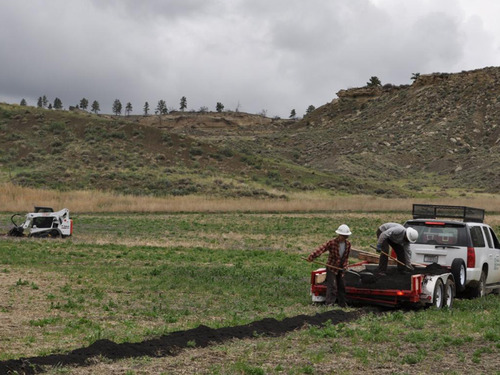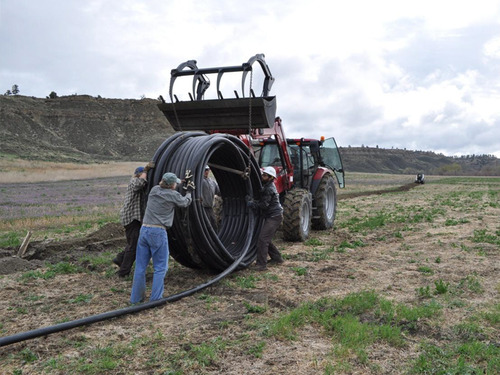

Featured on MCC’s blog
“This rock I ascended and from its top had a most extensive view in every direction on the Northerly Side of the river high romantic clifts approach & jut over the water for some distance both above and below.”
Over 200 years ago, William Clark of the famed Lewis and Clark expedition etched his name into the sandstone cliff 30 miles east of present day Billings, Montana. And in the backdrop of the last remaining physical evidence of the expedition, a group of MCC Field Crew Leaders went to work improving habitat for the wildlife species that continue to call eastern Montana home.
The 4,500 acre site was acquired by Montana Fish, Wildlife and Parks (FWP) in 2007. Formerly a ranching operation, FWP began transforming it into a Wildlife Management Area (WMA) in 2009. Situated in semi-arid sage brush country, it’s easy for expedition fanatics to overlook prospering habitat.
“The Yellowstone WMA is unique in that it borders several thousands of acres of Bureau of Land Management land and roughly five miles of river front habitat,” said FWP Wildlife Research Specialist Jay Watson. “Since work began, I’ve seen meadowlarks, fly catchers, vireos, warblers, and gold finches in the area.”

One priority of this project was to construct areas that would help establish upland bird populations by constructing brood plots. The plots function as a feeding and nesting area for these species. By planting native vegetation, the birds are afforded winter habitat, cover during nesting season, and an area to raise chicks each spring. The plots are constructed in such a way that they actually encourage insects to move into the plot, providing critical nutrition to hatchlings.
And while the Yellowstone WMA is managed for upland birds, Montana’s system of 77 WMA’s covers just about anything you could hope for in Big Sky Country. According to the FWP website, WMAs provide habitat for bear, bighorn sheep, birds, deer, elk, furbearers, moose, mountain goats, and wolves.
“It gave perspective to what all goes into the survival of these species,” said MCC Crew Leader Megan Woodruff. “We helped reestablish livable conditions for the wildlife and saw firsthand how it strengthens Montana’s ecosystems from insects on up to mammals.”

Fighting rain and cold, the crew pressed on until the call was made to temporarily suspend efforts. But as soon as the clouds rolled out, leaders rolled back in to pick up where they left off. In just four days the crew was able to make significant strides, but the project is part of an ongoing effort.
“The project, as it stands, is about two-thirds complete. In about three years we hope to have the entire area converted. However, it will still require maintenance like burning and mowing to maintain biological diversity,” Watson said.
Projects on this scale take considerable planning and support to come to fruition. FWP and MCC would like to thank The Montana Chapter of the Safari Club International, Yellowstone Valley Chapter of Pheasants Forever, the Billings Rod & Gun Club, and the Bureau of Land Management for their contributions and commitment to improving this area for both wildlife and public use alike.
To learn about accessing the Yellowstone Wildlife Management Area, please visit the following link:https://fwp.mt.gov/fishAndWildlife/wma/siteDetail.html?id=11181201


































































